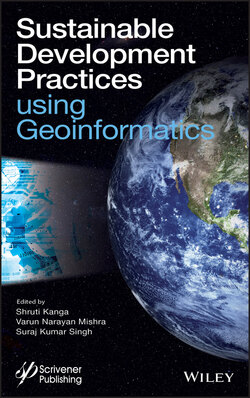Читать книгу Sustainable Development Practices Using Geoinformatics - Группа авторов - Страница 20
1.4.2 Urban Sprawl
ОглавлениеIt is imperative from above classified (Figure 1.3) remote sensing images of different time period that the LULC in Barasat municipality area is more inclined toward urbanization. Moreover, the rate of urbanization in the study area has changed rapidly within second decade than the first decennia. It is clear from Figure 1.4 that there are two peculiar patterns of urban growth found in the study area. Initially, the urbanization in the study area shows the linear pattern followed by concentric development in built-up area. The Figure 1.4 clearly shows that in the year 2001, there was only few clusters of built-up area, which is showing trend of linear growth in the year 2011 followed by again concentric development of built-up area in the year 2017. Moreover, due to such sequential developmental pattern in the study area, there is no space for easy air circulation within the urban domain. The scale of growth in urbanization in concentric pattern starting at scale of 1 in the year 2001, it became 2 times in the year 2011 and has increased to 6 times in the year 2017 (Figure 1.5A). However, the scale of growth in urbanization in linear pattern has changed manifold, starting at a scale of 1 in the year 2001, it became 2 times in the year 2011 and in turn it has increased to 4 times in the year 2017 (Figure 1.5B). The impact of concentric urbanization is greater in relation to the linear urbanization pattern during 2011 to 2017 than during 2001 to 2011 (Figure 1.4).
Figure 1.4 Urban Sprawl pattern from 2001 to 2017.
Figure 1.5 (A) The Circular pattern of increasing population from center of the city. (B) The Linear pattern of increasing population alongside road.
